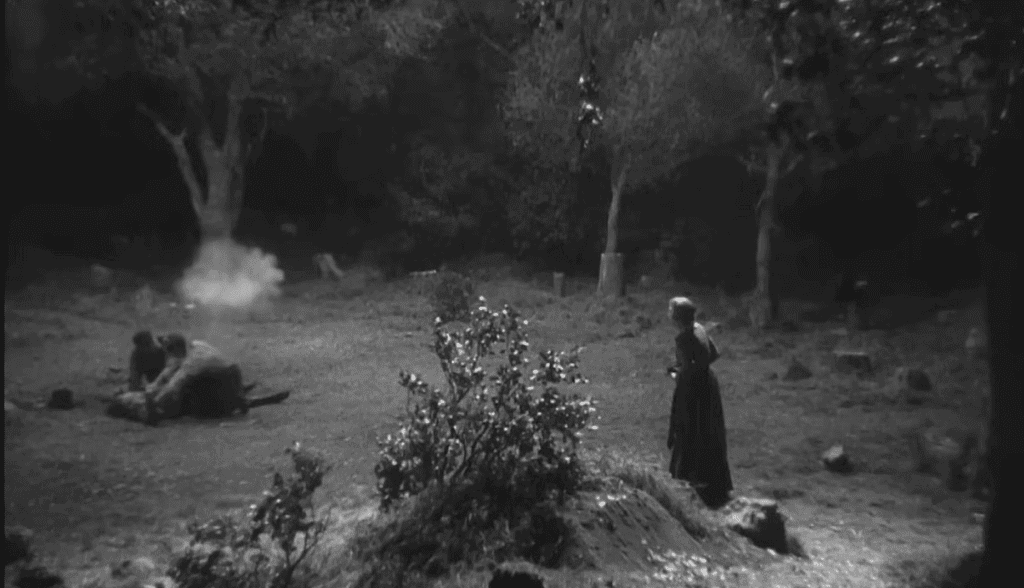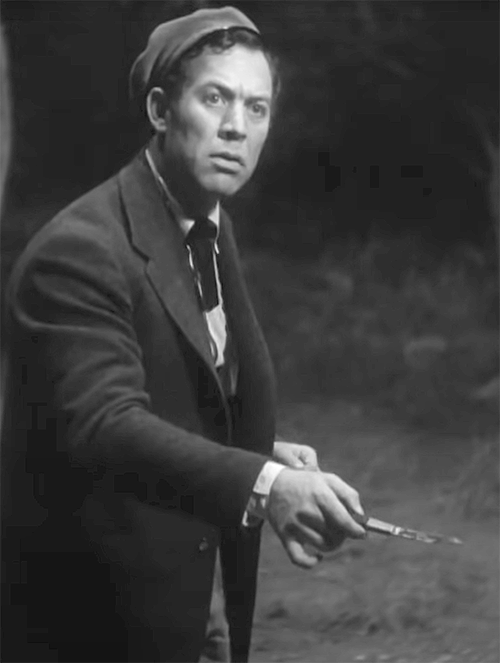
Young Mr. Lincoln is early Henry Fonda at his best
Young Mr. Lincoln is a revered John Ford film made during the master’s hot streak of 1939, when he directed three world-class films leading up to a fourth classic, Grapes of Wrath, in 1940. John Ford was already a well-respected director of Hollywood films, having won a Best Director Academy Award in 1935 for The Informer.
The year 1939 – Ford was 45 years old — would only enhance his stature. It begins with the release on February 2nd of Stagecoach, the film credited with both launching the career of John Wayne and reinvigorating the Western picture genre. It was nominated for seven Academy Awards, including Best Picture and Best Director.
Ford’s next film, the biopic Young Mr. Lincoln starring Henry Fonda, was less successful, attracting little critical attention and no major awards. Its domestic first-year gross has been reported as $750,000, ranking it a moderate financial success. Its reputation has only grown since its first release, and it was added to the National Film Registry in 2003.
Drums Along the Mohawk, again with Fonda in the lead, was released November 10th of the same year, and Grapes of Wrath, the fourth film in this series, followed in 1940. It would win a Best Picture Oscar and earn Ford his second Best Director award.
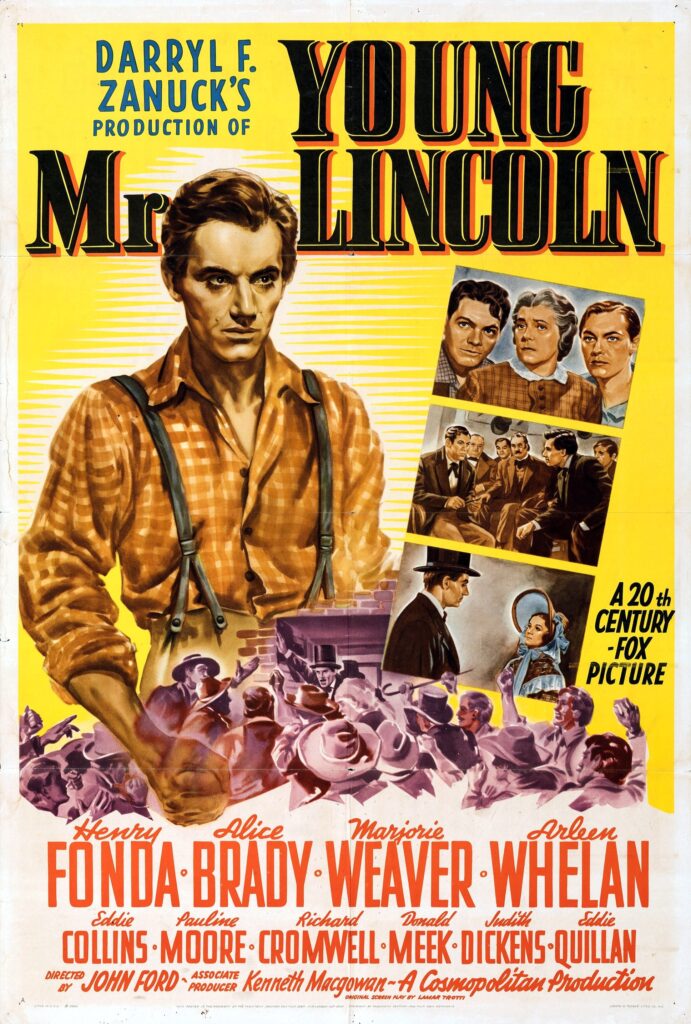
Young Mr. Lincoln opens in the year 1832, almost 30 years before Lincoln’s election as President and the Civil War years. The setting is New Salem, Illinois. Lincoln is age 23 and newly returned from the Blackhawk Indian Wars. He has set up shop as a co-owner of the Lincoln-Berry General Store in New Salem. Ford divides the movie into three parts, only two of them historically accurate: Lincoln’s time in New Salem and his relationship with Ann Rutledge; his move to Springfield, Illinois as a self-taught lawyer and his introduction to Mary Todd; and a third fictionalized version of Lincoln’s courtroom skills.
For the first two sections, the director focuses on well-known Lincoln anecdotes. Ford films Lincoln’s discovery of a set of law books – Blackstone’s Commentary of English Law — after trading for what he assumes is a worthless barrel of books. Featured also is an early meeting between Lincoln and Ann Rutledge. As a pair, the two are stiff and awkward, despite what appears to be obvious affection between them. In the next scene, Lincoln stands by Ann’s grave – she died of typhoid fever in 1835 at the age of 22 – and he asks rhetorically for direction with his life.
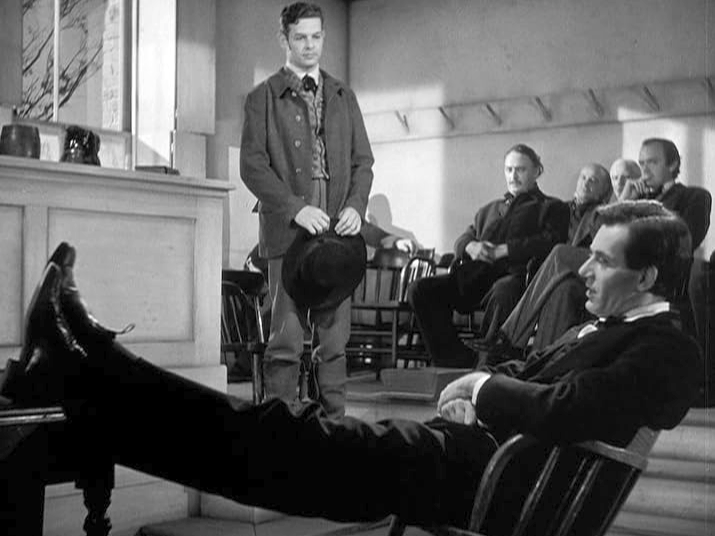
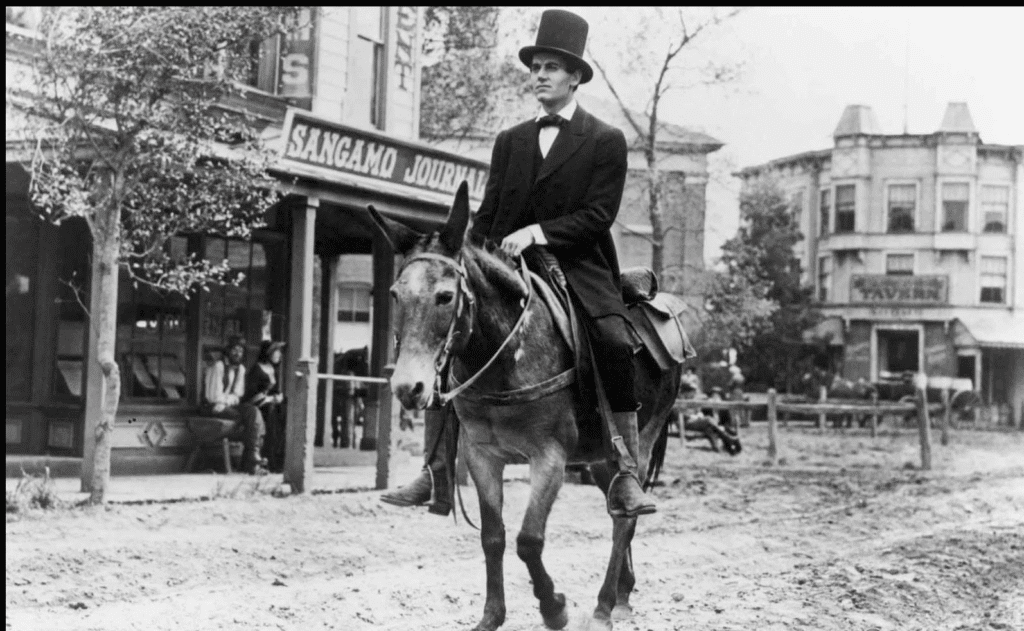
The middle part is taken up with frontier life in Springfield and Lincoln’s fledgling law practice. The section builds toward a murder trial that will involve Lincoln, but it takes time also to introduce Mary Todd and her other suitor, Stephen A. Douglas. Ford can’t resist the Lincoln anecdote where Lincoln proclaims he wants to dance with Miss Todd “in the worst way,” then proceeds to do just that.
The final section involving the murder trial takes up almost the last half of the movie. Here, the movie takes historical liberties, strategically selecting facts from two actual murder trials involving the future president: the Duff Armstrong case in 1858 and the trial of Quinn (Peachy) Harrison in 1859. From the Armstrong case, the screenwriters borrow Lincoln’s defense that key witness testimony seen “by the bright light of the moon” was likely false. In the real case involving Duff Armstrong, Lincoln produced a Farmer’s Almanac that indicated the moon had not yet risen at the time of the incident, casting doubt on the earlier testimony.
The Peachy Harrison case involved a former law clerk of Lincoln’s who was attacked by two brothers as part of a longstanding family dispute. The defendant Harrison had drawn a hunting knife after the two men accosted him at a Springfield drug store. Lincoln successfully argued self-defense for his client, a legal precedent that was still relatively new in frontier law.
The fictionalized movie trail involves two brothers accused of killing a town bully that had been harassing the older brother’s wife. It is complicated by the fact that the boy’s mother witnessed the fight and saw one of her two sons drop the knife used in the attack. In theory, the mother can identify the killer.
Lincoln manages to not only question earlier testimony used against the boys “by the light of the moon,” but also gets Ward Bond – playing one of the two bullies – to confess to the crime.
